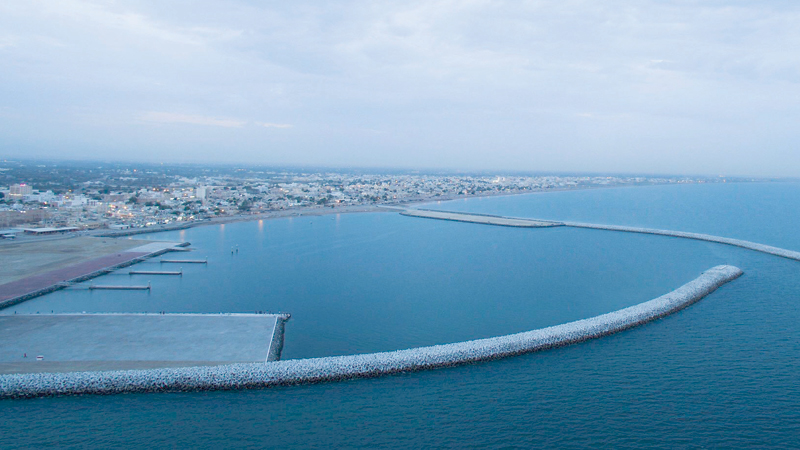

MUSCAT, MAY 27
Three new fishery harbours are planned for implementation at key locations along the Wusta and Dhofar coasts as part of a bid to expand and modernise the Sultanate’s fishery harbour infrastructure. Also in conjunction with this effort, authorities are studying the feasibility of establishing a pair of model fishing villages on the Wusta coast, while supporting the roll-out of a fleet of modern fishing boats as well.
The initiatives stem from studies designed to augment Oman’s fisheries sector and its contribution to the Gross Domestic Product (GDP), while also supporting employment generation for nationals and advancing the country’s food security goals.
The fishery harbour expansion project, conceived as part of the government’s Tanfeedh Labs (The National Programme for Enhancing Economic Diversification), seeks to address gaps in the country’s harbour infrastructure.
Studies commissioned by the government found an inadequate number of ports between Masirah Island and Lakbi, as well from Lakbi to Hallaniyat. Accordingly, it identified the need for ports to be established at Mahoot and Dhitab (near Duqm) on the Wusta coast, and Al Shuwaymiyah in Dhofar Governorate.
Tendering for the construction of new fishery harbours at Mahoot and Al Shuwaymiyah is expected to commence this year, while Dhitab will be subject of geotechnical investigations and surveys before it is progressed for implementation.
Further, in a bid to catalyse the growth of fisheries along Oman’s eastern seaboard, the Ministry of Agriculture and Fisheries is collaborating with the Ministry of Housing in fostering the development of dedicated fishing communities at Hitam and Sarab on the Wusta coast. Both locations are billed as promising for commercial fishing, but lack the critical mass necessary to attract investment into these areas.
The goal for Oman’s authorities is to encourage Omani fishermen to move from the surrounding villages and settle in model fishing villages planned at Hitam and Sarab, and thereby jumpstart the growth of lucrative fisheries activities in these locations. Further, this aggregation of scattered activities into centralised locations will not only boost fishing, but also deter unauthorised fishing activities in these waters, according to officials.
Hitam will initially serve as a pilot fishing village and pave the way for suitable land and approvals to be obtained for a similar model village planned at Sarab. A consultant will also be appointed to undertake a feasibility study for the implementation of the project.
Likewise, the Ministry of Agriculture and Fisheries is driving the introduction of a fleet of modern coastal fishing vessels to replace traditional dhows that are found to be wanting in terms of their operational and navigational capabilities. Furthermore, the dhows are deemed unsafe for night-time fishing and not suitably equipped to preserve their catch from potential spoilage.
Plans drawn up by the ministry envision the roll-out of around 30 modern coastal fishing vessels with funding support from Al Raffd Fund. Similar moves are afoot to introduce 20 modern boats as alternatives to the fibreglass skiffs typically used by Omani fishermen, but are found to be ridden with deficiencies that impact fish catch and quality.
Also supporting these initiatives as stakeholders are the Implementation Support & Follow-up Unit (ISFU) of the Diwan of Royal Court, Ministry of Regional Municipalities and Water Resources, Public Authority for Water, and Royal Oman Police.
Oman Observer is now on the WhatsApp channel. Click here



